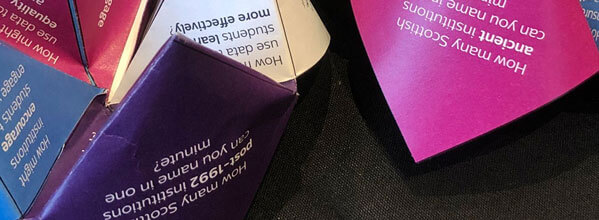
Paku Paku - Evidence for Enhancement Edition
Publication date: 12 Jun 2019
This is the Evidence for Enhancement Edition of a Paku Paku designed by QAA Scotland. A Paku Paku, sometimes called a paper fortune teller or chatterbox, is an origami game that uses questions and answers. It's inexpensive to produce and fun to use. You can use it as a prompt to get people talking - either as an icebreaker or for a longer discussion session.
| Author: | QAA Scotland |
|---|---|
| Format: | |
| Size: | 0.09 MB |
